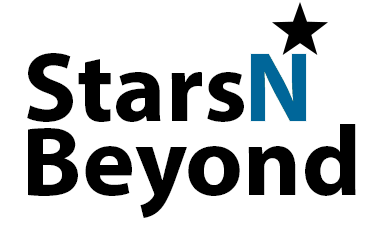Medical Sciences
Specialisations
- Complementary Therapies;
- Dental Science;
- Medical Science;
- Nursing;
- Nutrition and Community Health;
- Optical Science;
- Pharmacy;
- Public Health;
- Radiography; and
- Rehabilitation Therapies.
Qualifications
Health discipline programs are offered at the following qualification levels:
- Certificate
- Diploma
- Advanced Diploma
- Bachelor Degree
- Graduate Certificate
- Postgraduate Diploma
- Masters by research/coursework
- PhD
Vocational Education and Training Programs
TAFE and private colleges offer a wide range of practical Health programs including:
- Community Health;
- Dental Health;
- Alternative Therapies – such as herbal medicine, shiatsu, remedial medicine, naturopathy and massage;
- Medical Imaging Science;
- Tropical Medicine;
- Nursing.
Examples of programs offered at this level include:
|
LEVEL |
QUALIFICATION |
Certificate |
Certificate IV in Community Services. |
Diploma |
Diploma of Remedial Massage; |
Advanced Diploma |
Advanced Diploma of Operating Theatre Practices; Advanced Diploma of Nursing. |
Typically entry requirements into medically based programs such as Nursing, Dental Science and Medical Science are higher than Remedial Therapies and Community Services. For example:
- Advanced Diploma of Dental Prosthetics – this program in some cases requires students to have work experience as well as academic qualifications.
- Diploma of Nursing Care – in some cases, entry requires:
– a pre-selection test through VETASSESS;
– a current first aid certificate:
– completion of Australian grade 12 or equivalent (A Levels, International Baccalaureate or Canadian OAC). - Diploma of Applied Science – requires completion of equivalent to Australian grade 12 (A Levels, International Baccalaureate or Canadian OAC).
University Programs
Medical programs at universities have limited places and high entry requirements. Some streams will require students to have completed a Bachelor Degree before being admitted.
Note that the English language requirements are usually higher for programs in the Health field. For example, the English language proficiency requirements for the University of Queensland can be found here.
Examples of programs offered by universities include:
|
LEVEL |
QUALIFICATION |
Undergraduate |
Bachelor of Nursing; |
Postgraduate |
Graduate Certificate of Health Services Management; Masters of Mental Health Nursing; PhD. |
Undergraduate
Examples of typical entry requirements are:
- Bachelor of Medicine / Bachelor of Surgery (MBBS) – has the highest entry requirement of any Health discipline course. Requirements range from admission on the basis of a Bachelor Degree, interview and completion of a Medical pre-admission test such as the GAMSAT or MCAT to the top 1% of school leavers. This equates to 13 points from A Levels. Students enrolling in the MBBS also have to complete clinical and practical training before being allowed to practise as a Doctor.
- Bachelor of Dentistry – also has limited places and very high entry requirements. At some universities students enrol in a pre-dentistry program during their first year. Admittance into Bachelor of Dentistry is then based on their performance.
- Bachelor of Pharmacy, Physiotherapy and Occupational Therapy – also have high entry requirements and limited places, however students are generally assessed for admission on the basis of their high school results.
- Nursing and Health Administration courses have relatively lower entry requirements. For example, Bachelor of Nursing – entry requirements range from completion of Australian grade 12 (or equivalent) with one prerequisite subject from Biology, Chemistry or Physics to excellent grades from Australian grade 12 or equivalent.
Postgraduate
Postgraduate programs in Health tend to be for students with a scientific undergraduate degree.
Pathways
Limited pathways are available within this discipline including:
- Remedial Medicine;
- Health Administration;
- Nursing and Health Sciences.
Other non-credit pathways are available for students pursuing a graduate MBBS through a Science- related undergraduate degree.
Professional Associations
Generally, Health programs include practical components where students treat patients under supervision. Examples of programs offering this practice include: MBBS; Dental Science; Pharmacy; Physiotherapy; Occupational Therapy; and Nursing.
Graduated students may be eligible for membership in the following professional bodies:
|
Dental Science |
|
|
Medical Science |
|
|
Nursing |
|
|
Optical Science |
|
|
Pharmacy |
|
Career Opportunities
Acupuncturist; Audiologist;
Dental Technician/Dentist; Nurse;
Massage Therapist;
Health Administrator; Occupational Therapist; Dietician; Doctor/Surgeon/Specialist;
Pharmacist;
Physiotherapist;
Psychiatrist;
Welfare and Community Worker; Podiatrist;
Ambulance Officer; Chiropractor;
Natural Medicine Practitioner.
Useful Information
Government sites
- Australia – Country Information (DFAT)
- Australian Demographic Statistics, March 2011 (ABS)
- Public Holidays
Tourism sites
- Australian Capital Tourism Corporation
- Tourism New South Wales
- Northern Territory Tourism Commission
- Tourism Queensland
- South Australian Tourism Commission
- Tourism Tasmania
- Tourism Victoria
- Western Australian Tourism Commission
Weather Information
- Rainfall and Temperature graphs (BOM)
- you also can find weather information about cities around the world from World Climate.
Standard Times
Australia has both Standard Times and Daylight Saving Times (note that GMT stands for Greenwich Mean Time).
|
TIME |
STATE / TERRITORY |
GMT |
EXAMPLE |
|
Eastern Standard Time (EST) |
New South Wales Australian Capital Territory Victoria |
+ 10 |
5:00pm |
|
Central Standard Time (CST) |
South Australia Northern Territory |
+ 9.5 |
4:30pm |
|
Western Standard Time (WST) |
Western Australia |
+8 |
3:00pm |
Daylight Saving Times
|
TIME |
STATE / TERRITORY |
GMT |
EXAMPLE |
|
Eastern Daylight/Summer Time (EDT) |
New South Wales Australian Capital Territory Victoria |
+ 11 |
8:00pm |
|
Central Daylight/Summer Time (CDT) |
South Australia |
+ 10.5 |
7:30pm |
|
Western Daylight/Summer Time (WDT) |
Western Australia |
+ 9.0 |
6:00pm |
|
No Daylight Saving Times – use Standard Times |
Queensland Northern Territory |
+ 10 + 9.5 |
7:00pm 6:30pm |
Refer to the Bureau of Meteorology for the start and finish dates of daylight saving times.
